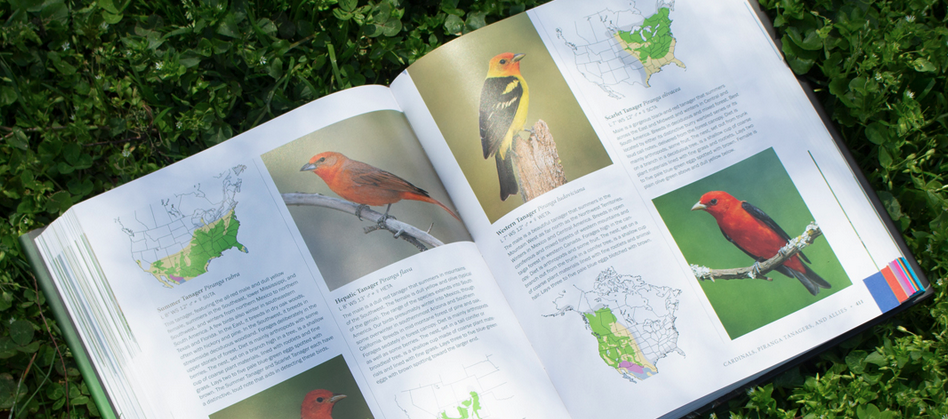
The Greeks had a saying: Mega biblion, mega kakon, which translates roughly as, “A big book is a big bore.” This, Birds of North America: A Photographic Atlas, a book published by Johns Hopkins Press, is certainly big; it contains more than 560 pages in a bulky 9” x 11” format and weighs close to five pounds (think quality of paper). The capable authors is writer Bruce M. Beehler, collaborating with photo editor Brian E. Small. The question to ask is whether the book qualifies as a true bore and thus something to avoid, or whether it is exciting and informative enough to justify its hefty price.
This question is especially valid since the best current field guide, The Sibley Guide to Birds, 2nd ed., written and illustrated David Allen Sibley, is available for less than half the price. Yes, there is a difference in focus between the two books. Beehler’s book is an atlas in which the emphasis is on range maps, while Sibley’s is a field guide where the primary focus is on species identification. But since Sibley's also contains range maps for each species, the comparison, I think, is fair. So what does Beehler’s book offer that can’t be found in Sibley and at a more reasonable price?
It represented the mind’s lust for knowledge for its own sake, and it increased a person’s pride in their own understanding.
Let’s start by considering the author’s own description of his book’s contents. According to him, this volume has three components: beautiful images of birds, up-to-date and detailed species range maps, and concise text.
In regard to the second and third components, Beehler’s book really offers nothing that can’t be found in Sibley or any other decent field guide. The verbal description of each bird species is for the most part formulaic. It describes the bird’s range, migration patterns, diet, and nesting practices. Likewise, the color-coded range maps, based on data from eBird and the Cornell Lab of Ornithology, are for the most part no different from those in Sibley except in one respect. Because they are larger in Beehler, the maps are easier to read.
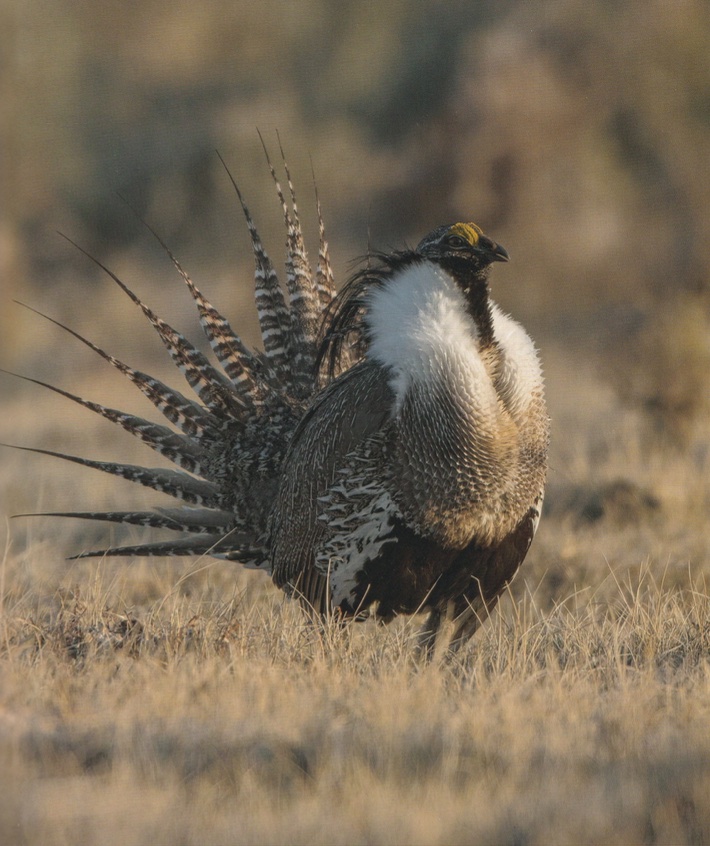
Gunnison Sage Grouse.
It is in the images of the birds that Beehler’s book outshines Sibley and every other current guide to North American birds. To understand just how great the difference is between the photographs in Beehler and the drawings in Sibley, it would help to cite the medieval distinction between curiosity and wonder. Curiosity, for the medieval philosopher, was a negative habit of the mind. It represented the mind’s lust for knowledge for its own sake, and it increased a person’s pride in their own understanding. Wonder, on the other hand, led to the virtue of humility by filling one with astonishment at the existence of something that was somehow greater than oneself.
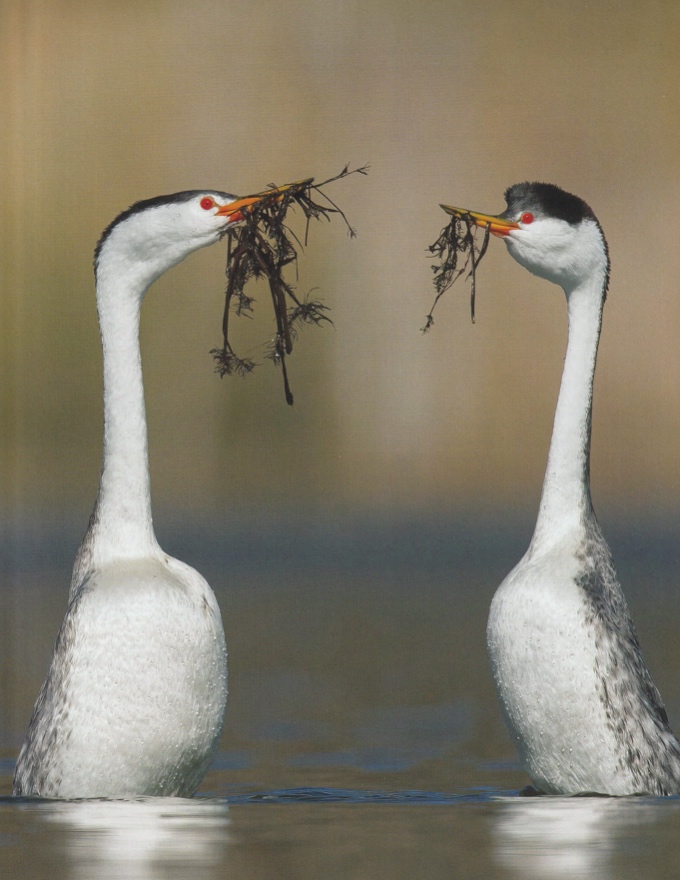
Two Grebes in mating display.
The drawings in Sibley’s book satisfy our curiosity by helping us to identify the birds we see. But the photos in Beehler’s book excite our wonder by focusing not so much on field marks as on the beauty of the bird itself. And one reason the photos work so well is the large size of the book. Many of the photos occupy either a whole or a half page, and their scale alone magnifies the wonder that they excite in the viewer. In this sense, the book’s size is an advantage that the field guides, designed to be portable, cannot replicate.
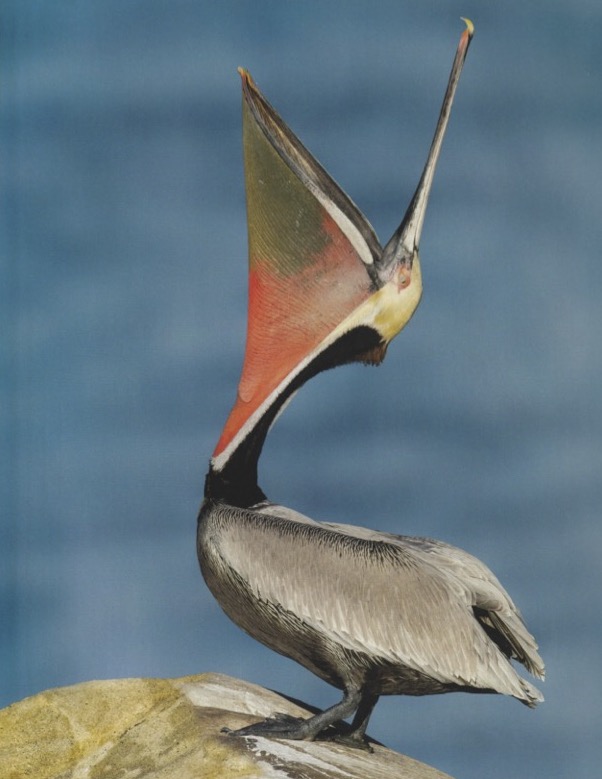
Brown Pelican.
It would be difficult to pick out a single favorite among all the outstanding photos in this book. But a top-three list might include the Gunnison Sage Grouse in full mating display, the two Grebes offering each other a mouthful of pond weed, and a Lewis’s Woodpecker in flight with an acorn it its bill.
The other aspect of this book that might prompt a birder to buy it is the comprehensive and illustrated list it contains of vagrant and rare species that have been recorded in North America. It is convenient to have such a list all together and in one place. This will appeal not only to the seasoned birder who has seen a number of these rarities, but also to the novice who dreams of finding them sometime in the future.
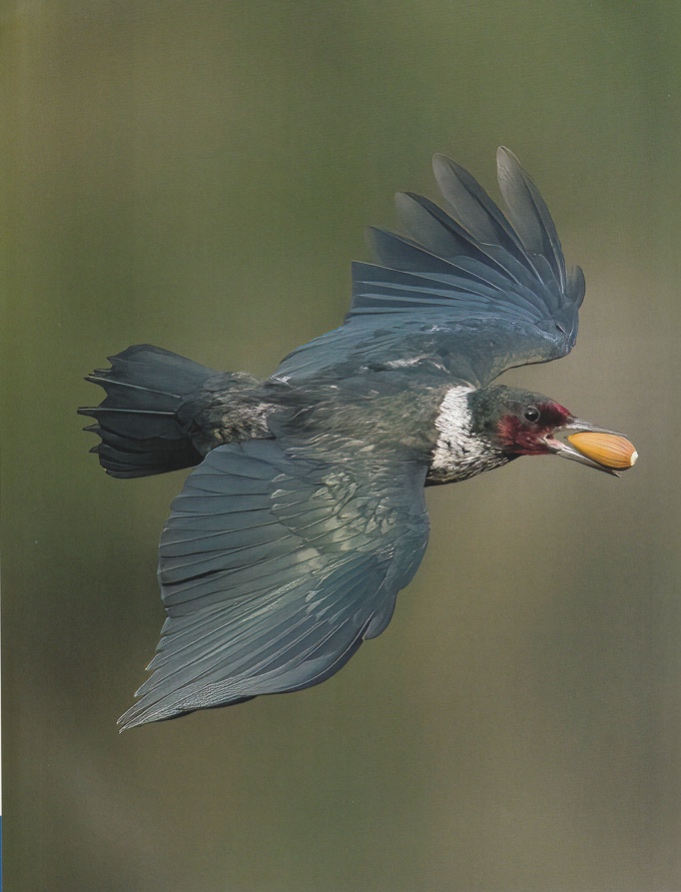
Lewis' Woodpecker.
Anyone who has spent much time with birders knows what insufferable bores we can be with our lists, our gear, and our unbalanced adoration of rarities. One service this book performs is to switch the focus back from the birder to the bird. One way it does this is by reminding us of how stunningly beautiful something as common as a Brown Pelican can be when see in the proper light and at the right time of year. Now that online apps are replacing printed field guides, this book serves as a reminder of something that is, to put it bluntly, irreplaceable: the personal relationship one develops with a good book, especially one as beautiful as this. ō
Birds of North America: A Photographic Atlas
by Bruce M. Beehler. Photo editor: Brian E. Small
John Hopkins, 560 pp. $59.95

EDWARD O'CONNOR is an editor and writer who has published stories and critical pieces in magazines and newspapers across Canada, including the Globe and Mail, Quill and Quire, Grain, The Fiddlehead, Canadian Notes and Queries, and The Journey Prize Anthology. He is also the author of the novel Astral Projection. He lives in Toronto. View Edward's website.

Add new comment